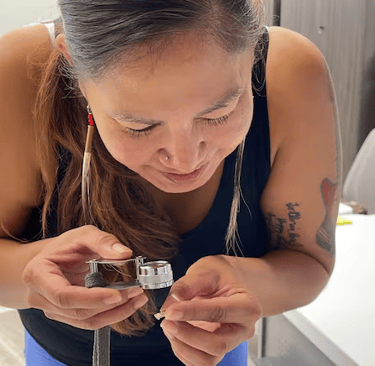B.C. Archaeology Field School Empowers Indigenous Students to Unearth Their History — and Identity
Liam O'Connell
8/4/20252 min read


In the heart of B.C.'s Alkali Valley, nine Indigenous students are trading textbooks for trowels, uncovering not only ancient artifacts but also a deeper connection to their culture and identity.
The students are part of a six-week archaeological field school initiated by the Esk’etemc First Nation in partnership with Thompson Rivers University (TRU). The program, held on traditional Esk’etemc land about 180 kilometres northwest of Kamloops, is designed to give participants hands-on experience in excavation, mapping, and surveying — while reconnecting them to centuries of untold history.
“This kind of opens my eyes,” said 50-year-old Greg Harry of Alkali Lake. “I want to go back and see how we lived back in the day, and how we survived ‘til now.”
The field school follows a major archaeological breakthrough earlier this year. In the aftermath of a 2024 landslide along the Chilcotin River, the Williams Lake and Esk’etemc First Nations uncovered 70 significant sites — including 31 pre-contact Secwépemc village locations and seven others with burials, caves, and rock art.
“We need to continue telling the stories,” said Williams Lake First Nation Chief Willie Sellars. “There is massive healing in being out on the land — that’s where our ancestors were, and still are.”
Education director Calvin Dubray spearheaded the initiative to give First Nations members the tools to lead archaeological work in their own territories, eliminating reliance on outside contractors. “Why can’t we do this ourselves?” he asked.
Thanks to Dubray’s efforts, the students in the program will be considered “field ready” by the end — qualified to assist certified archaeologists on future digs.
For student Audrey Grinder, 52, the experience has been transformative. “Every time I go in with a trowel, I think, ‘What will the ancestors let me see today?’ It’s discovery in the most natural form.”
One element that makes this program unique is its governance under Esk’etemc protocols, rather than external agencies. TRU archaeologist Beth Bedard, who instructs the course, said this allows for greater cultural integrity and community control.
“When oral history is paired with scientific analysis, it creates a more complete and meaningful picture of the past,” Bedard explained.
For many participants, the course has offered more than professional skills — it’s offered clarity, confidence, and a renewed sense of purpose.
“I wanted to understand more about where I come from — my past, my belonging,” said Grinder. “It gives insight into why we’re here.”
For 67-year-old Teena Ogden, the experience has been nothing short of a “second calling.”
“I’m gonna tell everybody about it,” she said, beaming. Next on her journey: learning the Secwepemctsín language to deepen her reconnection with her roots.
As students gently uncover remnants of ancient pit houses, they’re also piecing together something just as vital — their story, their strength, and their future.
News
Stay updated with the latest BC news stories, subscribe to our newsletter today.
SUBSCRIBE
© 2025 Innovatory Labs Inc.. All rights reserved.
LINKS
